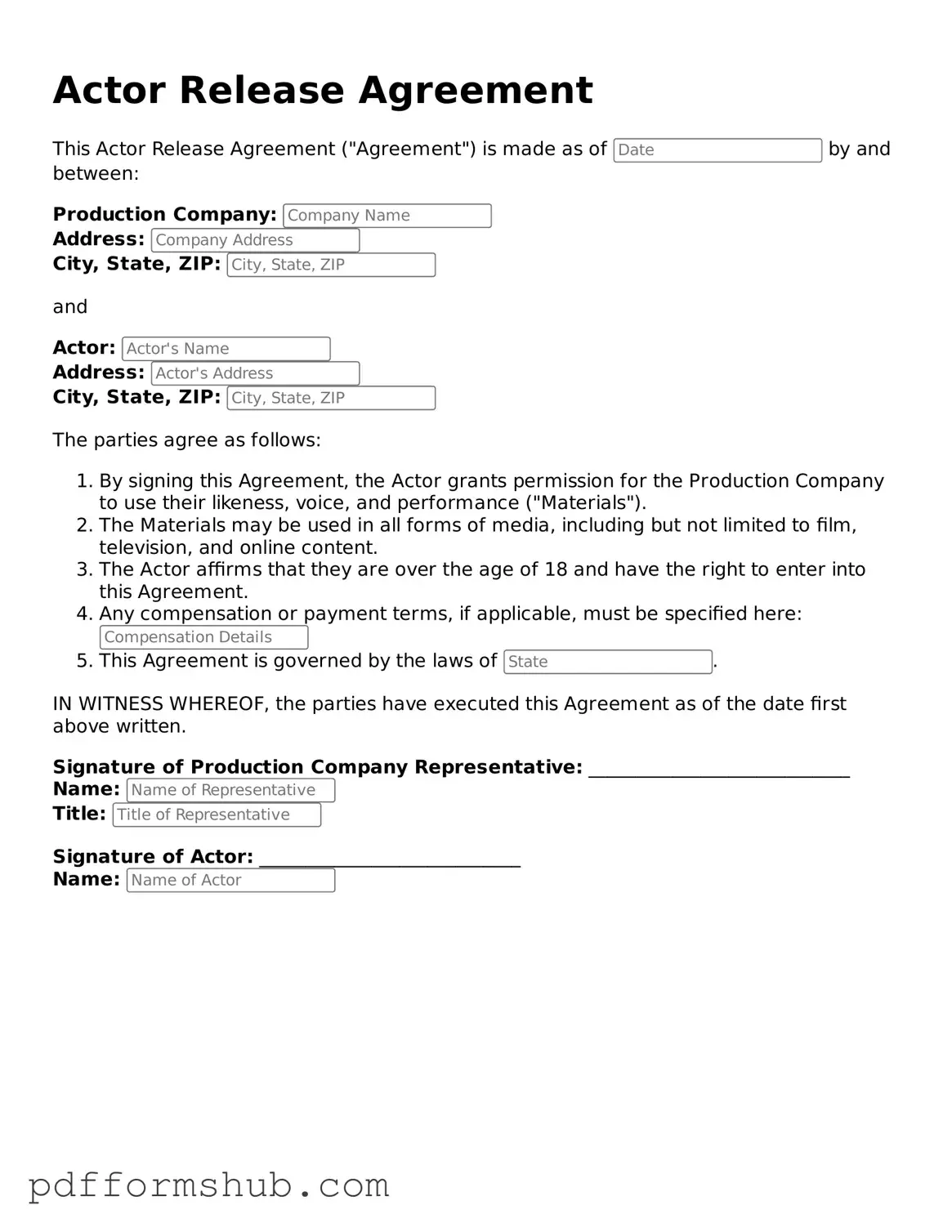The Actor Release form plays a crucial role in the entertainment industry, serving as a legal document that protects both the actor and the production team. It establishes the terms under which an actor grants permission to use their likeness, voice, and performance in various media, including films, television shows, and promotional materials. This form typically outlines the scope of usage, duration, and any compensation agreed upon. Additionally, it may address issues such as rights to distribution and the ability to edit the material. By signing the Actor Release form, actors not only affirm their consent but also acknowledge the potential for their work to be showcased in different contexts. Understanding this form is essential for both actors and producers, as it helps to ensure that all parties are clear on their rights and responsibilities. In an industry where creative contributions are paramount, the Actor Release form serves as a foundational element that fosters collaboration while safeguarding individual interests.
